Gothenburg is an easy trip from Oslo, yet how much do you know about Sweden’s second city? Here are 10 fascinating Gothenburg facts, so you can get to know our Scandinavian neighbours a little better.
While it may play second fiddle to the Swedish capital, Stockholm, in terms of size and global recognition, Gothenburg holds its own with a distinct identity that merges a historic maritime spirit with contemporary life and innovation.
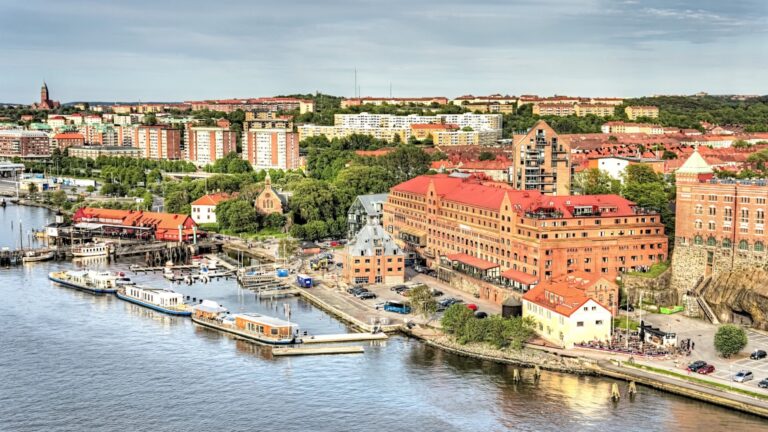
Its strategic location close to the Norway-Sweden border has given it not only economic significance but also a cultural richness derived from influences across Scandinavia and beyond.
A mere 3.5-hour ferry ride will whisk you away to Denmark, and in just a two-hour drive, the picturesque landscapes of Norway await. In fact, Gothenburg is just a 3.5-hour train or bus ride from Norway’s capital city, Oslo.
An introduction to Gothenburg, Sweden
While the city’s maritime roots anchor its identity, Gothenburg is also a hub of art, music, gastronomy, and sustainable innovation.
The juxtaposition of cobbled streets with cutting-edge design studios, and historic shipyards with green urban spaces, lends the city its distinctive personality. It’s no wonder that both tourists and professionals from around the world are drawn here.
From its commendable efforts in sustainability to a rich history of trade, Gothenburg invites exploration. As we dive deep into the story of this important city in Sweden, here are ten interesting Gothenburg facts.
1. It’s the fifth largest Nordic city
Gothenburg's significance isn't just confined to Sweden; it stands tall as a major urban hub in the broader Nordic panorama.
Nestled on the west coast of Sweden, Gothenburg, with its maritime charm and cosmopolitan flair, wields influence far beyond what one might expect from a non-capital city.
Boasting a population nearing 600,000 within its immediate confines, and enveloping over 1.1 million souls in its extended urban expanse, Gothenburg's demographic weight is undeniable.
In the Nordic region, it comfortably claims the title of the largest city that doesn’t serve as a country's capital. This is a remarkable distinction, especially considering the historic cities scattered across the region.
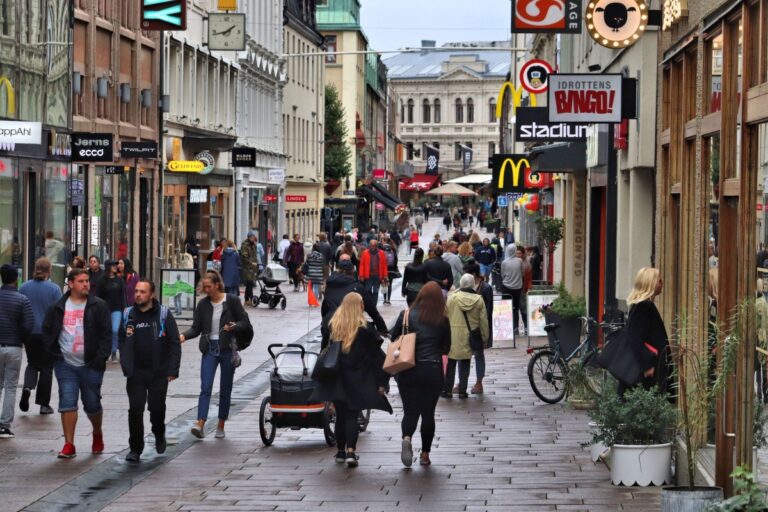
To put things into perspective, Gothenburg, with its vast urban area and bustling activity, dwarfs Reykjavik, the capital of Iceland.
While Reykjavik, with its vibrant arts scene and geothermal wonders, holds its own unique allure, it’s Gothenburg that claims the crown in terms of sheer size within the region.
2. The city isn’t actually called Gothenburg
In its native Swedish tongue, the city proudly bears the name Göteborg, with its pronunciation, yacht-a-bore(g), often tripping up those unfamiliar with the Nordic lilt.
Interestingly, while other Swedish cities like Stockholm and Malmö retain their original names across languages, Göteborg stands out with its anglicized version, Gothenburg.
Dive a bit deeper, and one uncovers a curious tale of branding and identity. Wander the city streets, and you'll find many businesses, from chic boutiques to bustling cafes, displaying the English rendition of the name.
This isn't just a nod to globalization but a reflection of the city's international character and its historical ties to trade and overseas relations.
The debate over the city's moniker isn't a recent one. The city council, always attuned to Gothenburg's evolving global presence, has juggled its branding strategy over the years.
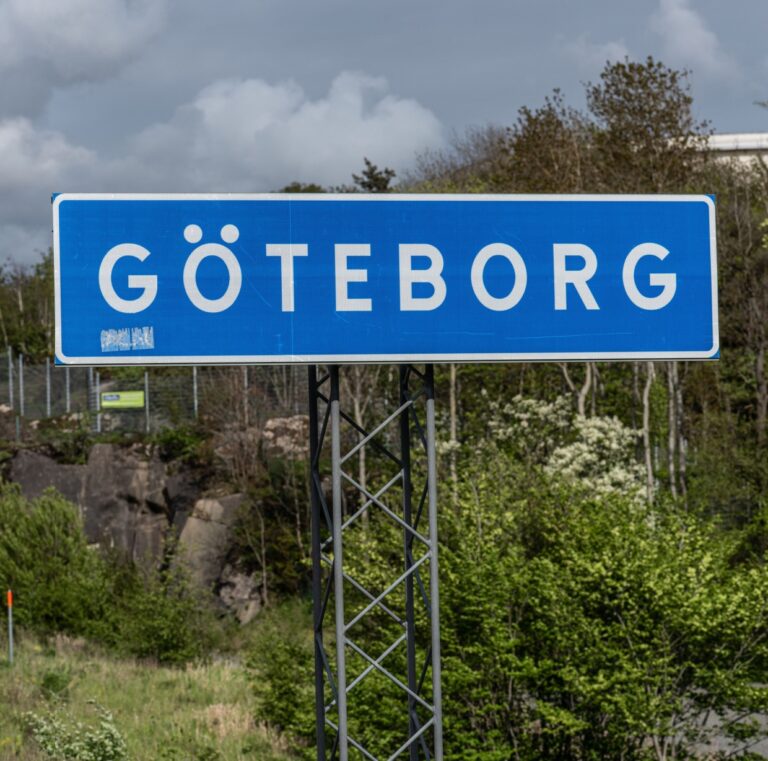
In a 2003 move aiming to celebrate local heritage, it was determined that Göteborg would be promoted.
Yet, by 2009, recognizing the global resonance of “Gothenburg” and its inherent international accessibility, the decision was reversed.
Today, in a world more interconnected than ever, Gothenburg stands as the city's designated name in international communications, acting as a bridge between Swedish heritage and global outreach.
3. Sweden’s biggest tourist attraction
Although tourists flock to Stockholm, it’s actually Sweden’s second city that hosts the country’s biggest single tourist attraction, Liseberg amuseument park.
Established in 1923, Liseberg has transformed from a modest attraction into one of Europe's most celebrated amusement parks and a cherised emblem of Gothenburg history and culture.
Spanning an expansive area, Liseberg offers an eclectic mix of rides, ranging from pulse-pounding roller coasters to gentle carousels, ensuring visitors of all ages find their share of thrills.
Perhaps the most iconic of all its attractions is the wooden roller coaster, ‘Balder', often touted as one of the best wooden roller coasters in the world.
But Liseberg is not just about adrenaline. In winter, it transforms into a winter wonderland, adorned with millions of twinkling lights, hosting one of Sweden's most magical Christmas markets.

Summertime at Liseberg is equally entertaining, with open-air concerts and a burst of floral beauty throughout the park.
Moreover, the park's strategic location in the heart of Gothenburg makes it seamlessly integrated with the city's pulse. It's not just a place to seek thrills, but also a locale to relish gourmet meals, attend concerts, and participate in seasonal festivals.
Beyond its attractions, what truly sets Liseberg apart is its commitment to providing a holistic experience.
The harmonious blend of nature, with beautiful gardens and serene spots to relax, juxtaposed with the cacophony of joyous rides, renders a unique ambiance that resonates with both locals and tourists.
4. It’s the biggest port in the Nordics
Holding the title of the largest port in the Nordic countries, the Port of Gothenburg stands as a testament to the city's longstanding maritime heritage and its pivotal role in European trade.
Established in the early 17th century, the port quickly became the gateway to the West, facilitating trade between Sweden and the rest of the world. Its strategic location, at the crossroads of the North Sea and the Baltic Sea, made it indispensable for maritime commerce.
Over the centuries, the port has witnessed the passage of everything from timber and iron exports in the early days to modern-day electronics, vehicles, and energy products.
Today, the Port of Gothenburg is more than just a bustling trade hub. It's an ecosystem in itself, catering to both freight and passenger ships. Every year, it sees the movement of millions of containers, making it a lifeline for Swedish imports and exports.
Its passenger terminals, on the other hand, welcome thousands of travellers, connecting Sweden to its neighboring countries and beyond.
The port’s significance is not solely economic. It has played a role in shaping Gothenburg's identity. The influx of goods and cultures has made the city a melting pot of influences, enriching its diversity and vibrancy.

The maritime industry has also led to the establishment of several institutions and museums in the city, celebrating its seafaring legacy.
In recent years, the Port of Gothenburg has taken ambitious strides towards sustainability, aiming to reduce its carbon footprint and championing eco-friendly maritime practices. These efforts underscore the city's commitment to innovation and a greener future.
5. Modern Gothenburg was built by the Dutch
Despite the area of Gothenburg being inhabited for millennia, its modern incarnation owes much to the vision of the King of Sweden in 1621. The fledgling city's growth was significantly propelled by Dutch architectural and engineering ingenuity.
Drawing from their hard-earned expertise in marshland construction and canal development, the city's foundational design mirrored that of Amsterdam and other Dutch colonies, notably Batavia (present-day Jakarta).
This melding of cultures gave Gothenburg its unique and distinctive cityscape.
6. Pioneering the future of transportation
In 1927, Gothenburg made global headlines with the launch of the first Volvo car. Since its inception, Volvo has championed a human-centric and safety-first ethos, becoming an automotive icon.
While the car division of Volvo transitioned to Ford's ownership in 1999, Gothenburg still proudly hosts the headquarters of the Volvo Group, leading innovations in trucks, buses, and now, revolutionary 44-ton electric trucks.
Further testament to Gothenburg's commitment to innovation in transport is its nurturing of electric aircraft development, with the renowned Heart Aerospace choosing the city for its groundbreaking “Northern Runway” production and testing campus.
7. Gothenburg is twinned with Chicago
When one thinks of sister cities, it's often neighboring countries or cities with obvious historical ties that come to mind. However, the relationship between Gothenburg and Chicago defies this norm with an intriguing global partnership.

Among the Windy City's expansive list of 28 sister cities, Gothenburg holds the distinctive honor of being the sole representative from the Nordic region.
This unique alliance, represents more than just a symbolic friendship between two cities; it's a dynamic partnership that has yielded substantial collaboration over the decades.
Forged in 1960, the objectives of the sister cities programme stretch across a multitude of domains. Gothenburg and Chicago have collaborations in the areas of cultural arts and tourism, global education, government relations and international business.
8. A global sustainability champion
Gothenburg's unwavering commitment to sustainability resonates in every facet of its society, from enterprises to leisure.
This dedication hasn't gone unnoticed: in 2021, Lonely Planet crowned Gothenburg as the planet's premier sustainable city break destination. Furthermore, for half a decade, the Global Destination Sustainability Index celebrated Gothenburg as the top sustainable destination globally.
The city's trailblazing spirit is evident in its introduction of green bonds, a first globally, spurring climate solution investments.
With nearly every hotel embracing eco-certification and ambitious plans for a zero-emission urban center, Gothenburg sets a benchmark in sustainable urban living.
9. The city’s archipelago is vast
Gothenburg's southern archipelago is a tranquil home to 5,000 residents, swelling to over 10,000 in the summertime as Swedes flock to their holiday cottages.
While its car-free ethos underpins the city's green initiatives, ferries, bicycles, and mopeds ensure connectivity and mobility.
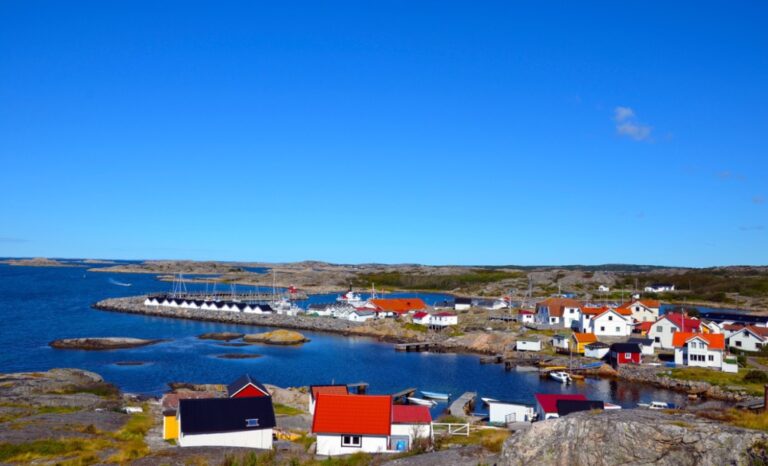
These islands, while echoing the city's progressive outlook, are also bastions of history. Norse sagas identify them as ‘the river islets', possibly serving as Viking-era hubs for trade fairs and duels.
Its northern counterpart, while sharing many attributes with the southern archipelago, boasts larger islands and communities. Here, car accessibility via ferries from Lilla Varholmen is allowed, with the ferry route to Hönö Klåva being a favorite weekend escape for many.
10. Gothenburg’s historic tram network
Gothenburg's tram network is more than just a mode of transport, it charts the transformation and growth of Sweden's second city.
With their iconic deep blue and white carriages weaving through Gothenburg’s picturesque streets, they've become an integral part of the city's urban landscape.
Established in the late 19th century, the tram network commenced as a horse-drawn system, later transitioning to electricity as the city expanded and technology advanced. Today, it stands as one of Europe's most extensive tram systems, covering vast swaths of the city and its suburbs.
Modernization has touched the tram network as well, with the introduction of eco-friendly trams and state-of-the-art infrastructure.
Yet, the essence remains unchanged. They are more than just vehicles; they are storytellers, charting tales of a city that respects its past while racing towards the future.
Some of the older tram models, still in operation for special events or tours, whisk passengers away to a bygone era, allowing them to experience the city as it was in the days of yore.
Have you ever been to Gothenburg? If so, what were your impressions of Sweden’s second biggest city? Let us know in the comments below.

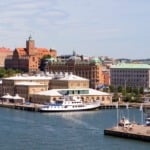

Yes, it was my great privilege, and a terrific thrill, to visit Yuttabory in October of 1981. I had friends who lived there, and they showed me around Göteborg and the southwest Sweden coast, for 3 days. We went to Helsingborg and then to Malmö, and to many places in between. It was a thrill beyond words to be able to see Sweden, even for a short time. It is a beautiful place with beautiful people and a beautiful language. I would live there if I could. Maybe some day I’ll be able to go back and see Stockholm and Oslo. TY for this great column.